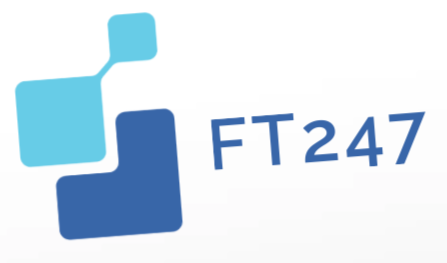The National Institutes of Health (NIH) feels like a bedrock of American innovation — and for good reason. NIH funding and leadership have catalyzed medical breakthroughs that have saved countless lives. There are other ways to raise funds for research and innovation: I’ve raised hundreds of millions of dollars in my career.
As economic and political winds shift, even long-established and lauded agencies can find themselves in peril. From personal experience, I’ve learned that no source of funding is guaranteed. I’ve worn many hats — a professor at MIT, a founder of multiple startups, an executive at top tech companies, and a beneficiary of government research support including my first small NIH grant in 2024. I do see the violent storm now hitting NIH and perhaps it could be eliminated by DOGE. One thing is clear: if you rely exclusively on NIH grants, you need a backup plan.
To be clear: I’m not advocating taking an axe to the NIH. I’m urging researchers to broaden their funding and research strategies. Researchers could then do more, not less, and faster. You could take the energy that went into grant writing to create projects and companies that don’t just publish papers but can deliver products to change outcomes in healthcare. You may find that it’s often better, faster and cheaper than the government funding route with more impact than paper impact scores.
What are the alternatives?
There are other ways to fund research — ways that can yield just as much impact, if not more. Earlier in my career, I co-founded a nonprofit with the goal of making $100 laptops for children worldwide, an idea many called “impossible.” We didn’t rely on U.S. grant money; we built partnerships with private donors and corporations and sold at-cost to governments in developing nations. By avoiding a single, narrow pipeline, we found a faster path to big impact. Those laptops evolved into the fastest-growing consumer electronics category ever recorded, transformed educational opportunities for many millions and made billions of dollars for our manufacturing partners.
Later, I founded an open-source R&D company. We have gone from ideas into prototypes that are designed for existing supply chains and so can be put into production like consumer electronics — on that timeline, cost structure and scale. Traditional grant funding could have been an option but I was eager to explore a more agile route that let us iterate exponentially faster and exponentially cheaper than possible in pure research. We don’t need more million-dollar therapies — I shouldn’t have to point this out but will — most people can’t afford them.
In a startup, you just need one person or group to believe in your vision and write that first check. There’s less bureaucracy, less waiting, and less chance of the dreaded “grand old men” panel rejecting an idea that might be too novel or risky for conventional funding.
Speeding up innovation
We’ve all seen brilliant scientists burnt out by the grind of repetitive grant cycles, constantly writing proposals, rather than doing the lab work. This slows down experimentation and stifles creativity. By contrast, startups or philanthropic “moonshot” initiatives can move with breathtaking speed, turning ideas into prototypes — moving from prototype to scale product quickly using existing manufacturing supply chains — long before a grant application might even be approved.
Of course, commercialization isn’t a panacea. But the reality is that published papers don’t save lives. Knowledge must cross the perilous gap to real-world application, to actual devices, drugs, or treatment protocols. Market-driven research, philanthropic investments, open-source collaborations, and prize-based competitions can all help ideas jump that gap. It should not take 20-40 years to ship a product as it does in healthcare. Healthcare research is essentially anti-innovation when measured by lives saved, at speed. We must do better as we think about other funding structures. People race toward death — 55 million die each year — while the research that could save them crawls forward.
So, if you’re a scientist or doctor with the next breakthrough in mind: Focusing on a startup means you think about manufacturing, marketing, and distribution from the outset — all the messy details that determine how people actually benefit from your creation. Find paths that enable innovation — the whole path of idea, implementation, success and failure — at the speed of software and semiconductor innovation: a few years, not a few decades. Emphasize collaboration, with open source models, and shared credit and rights, rather than defensive strategies with multi-billion dollar, multi-decade moats. Moats kill time, kill innovation, and kill people.
A call to action
The NIH is a remarkable institution. But times change. If you rely on federal grants as your sole means of support, you’re tying your destiny to forces outside your control. There are other roads to success in health and medical research. By pursuing them, you might gain more freedom, fewer administrative hurdles, and the chance to save lives faster.
I’ve hard-won scars and awards from academia, big tech firms, and venture capital. I’ve seen philanthropic generosity and the grit of inventors in tiny startup garages. And if there’s one common thread in all these experiences, it’s this: Human ingenuity thrives when it’s allowed to. If the NIH finds itself under threat — or if the next round of grants doesn’t materialize — we owe it to patients everywhere now and in the future to have a plan B ready.
Photo: TAW4, Getty Images
Mary Lou Jepsen, PhD is the Founder, CEO, and Chairman of Openwater.health, a company that develops medical technology integrating semiconductor physics, light, and sound to diagnose and treat diseases at the cellular level. Openwater aims to make hospital-grade medical care accessible worldwide. The company’s platform combines infrared imaging, ultrasound, and electromagnetic fields. Openwater collaborates with leading institutions to validate its technology and drive healthcare innovation. Using open-source principles and consumer electronics manufacturing, Openwater seeks to reduce medical device development time and costs. Jepsen has been named to Time Magazine’s 100 Most Influential People and CNN’s Top 10 Thinkers. A former executive at Facebook, Oculus, Google and Intel, Jepsen founded four hardware companies including One Laptop per Child (OLPC). Jepsen is a former MIT Professor with 250 published or issued patents.
This post appears through the MedCity Influencers program. Anyone can publish their perspective on business and innovation in healthcare on MedCity News through MedCity Influencers. Click here to find out how.


